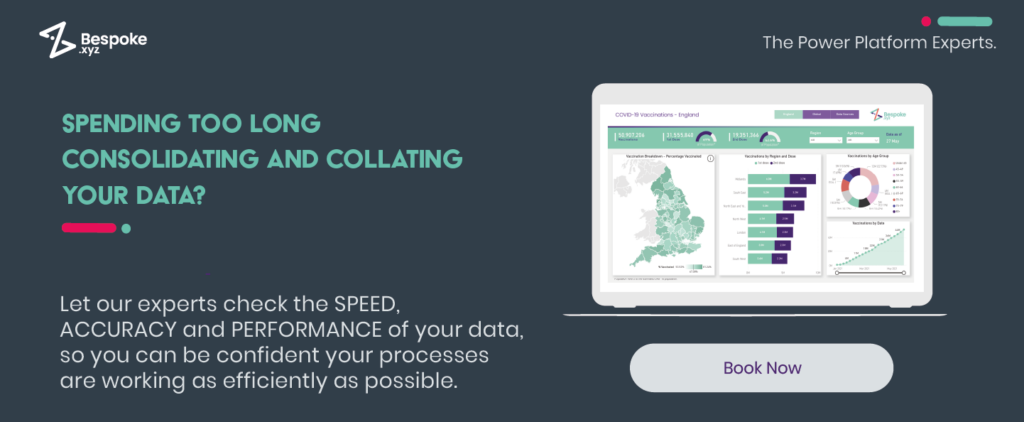You might not realise it, but if you’re using Power BI Premium, you’ve already got Microsoft Fabric in your tech stack. And chances are, you’re barely tapping into what it can really do. Which is probably why you’re here.
Fabric isn’t just another analytics tool. It’s a powerful, unified data platform that brings together everything from data movement and transformation to reporting and visualisation, all under one roof. And if you know how to use it properly, it can seriously level up your entire data strategy.
Whether you’re knee-deep in data projects or only just clocking that Fabric’s already sitting there, these 5 tips will help you tap into its full potential, make the most of the extra capacity it offers, and avoid the most common (and costly) mistakes we see.
Here’s how to unlock its full potential…
1: Get Clear on What Fabric Actually Does
People often think that Fabric is just “Power BI, but bigger.” But that’s not the case.
At a high level, Microsoft Fabric brings all your key data tools into one place.
That means:
- OneLake to store and manage your data (like a data lakehouse)
- Data Factory to move and transform it
- Synapse to analyse and model it
- Power BI to visualise and share insights
And it’s all fully integrated, which means you don’t need to stitch together systems, export datasets, or reinvent the wheel for every report.
If you want to dig a bit deeper into what all this means we’ve broken it down on our blog: Is Microsoft Fabric Right for Your Business?
So if you’re only using Power BI for reporting, you’re missing out on what Fabric can do behind the scenes.
2: Use That Extra Capacity to Your Advantage
One of Fabric’s biggest benefits (and something most teams completely overlook) is how much capacity it frees up.
If you’re already using Power BI Premium, Fabric is now integrated into that license. That means you’ve likely got access to new features and additional compute resources without needing to upgrade or pay extra.
What does that actually mean?
- Larger data models without hitting memory or storage limits
- Faster data refreshes and more reliable report performance
- Parallel processing of workloads that reduces delays and contention
- Less dependency on external tooling (e.g., separate data lakes or ETL platforms), which cuts both complexity and cost
But (and it’s a big but) if your Fabric environment isn’t configured properly, that extra capacity can vanish fast.
We regularly see:
- Teams overloading single workspaces, leading to inefficient resource use
- Refresh schedules clashing, causing performance bottlenecks
- A lack of clarity around how to transition from legacy pipelines to Fabric’s unified workflows
Done right, Fabric doesn’t just improve performance, it gives your team back time and your budget back breathing room. That’s why we work with clients to optimise their capacity planning and reduce unnecessary platform sprawl.
3: Build With Scalability in Mind From Day One
Just because it works now doesn’t mean it’ll work when your data triples or your user base explodes.
One of the biggest mistakes we see is teams building short-term solutions in a long-term platform. Fabric is designed for growth. But if you treat it like a one-off reporting tool, you’ll be rebuilding in six months.
Here’s what scalability looks like in practice:
- Creating versioned pipelines that don’t break every time someone updates a step
- Structuring data layers properly (raw > staging > curated) so things stay tidy
- Using parameterisation and templating instead of hardcoding everything
4: Embrace Integration — Stop Working in Silos
Fabric’s whole thing is unification. One platform, Onelake, one experience. But a lot of teams are still working like they’re using separate tools — with engineers over here, analysts over there, and Power BI users somewhere in the middle.
Fabric changes the game (if you let it):
- OneLake means no more endless file shuffling or duplicating datasets across departments
- Live data sharing between tools = fewer sync issues, less lag, and no “which file is the latest version?” questions.
- Integrated security, governance, and access controls to keep everyone in their lane, but on the same road
If you’re not using Fabric to break down data silos, you’re just rebuilding the same problems in a shinier interface.
When we work with teams, one of our first priorities is creating shared workflows, so everyone’s not just in Fabric, but actually working together in it.
5: Don’t DIY Everything — Get Strategic Support Early
Look, we love a hands-on data team, but Fabric isn’t something you want to fumble your way through. It’s powerful, complex, and full of opportunities to either scale… or stall.
We’ve seen it too many times:
Hours sunk into building pipelines that break under pressure
Poor capacity planning that costs more in the long run
Governance nightmares that pop up just when things start growing
You can absolutely figure it out alone with your IT team. But do you want to spend six months learning by trial and error when you could be using Fabric to drive results right now?
Working with a strategic partner who knows the platform inside out (that’s us) means:
- You avoid the early mistakes that cost you later
- You get a system designed for your data, your goals, and your team
- You actually start seeing ROI from Day 1 not Month 12
Want to Make Microsoft Fabric Work for You?
If you’re using Microsoft Fabric (or considering it), don’t wait until it’s “not working” to ask for help.
We’ve helped teams streamline their setup, unlock extra capacity, and build Fabric environments that scale smoothly, without the sleepless nights.
Get in touch and we’ll walk you through what’s working, what’s not, and how to make Fabric start pulling its weight.


